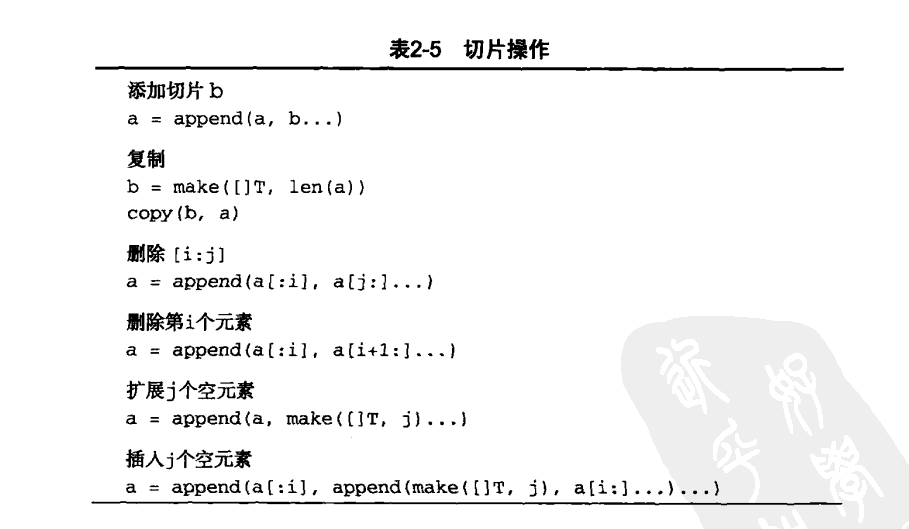golang 學習筆記 ---make/copy/append
阿新 • • 發佈:2018-12-11


package main
import (
"fmt"
)
func main() {
a := [...]int{0, 1, 2, 3, 4, 5, 6, 7}
s := make([]int, 6)
b := make([]byte, 5)
fmt.Println(a)
fmt.Println(b)
fmt.Println(s)
n1 := copy(s, a[0:])
fmt.Println(n1)
fmt.Println(s)
n2 := copy(s, a[2:])
fmt.Println(n2)
fmt.Println(s)
n3 := copy(b, "Hi")
fmt.Println(n3)
fmt.Println(b)
}
結果輸出:
[0 1 2 3 4 5 6 7]
[0 0 0 0 0]
[0 0 0 0 0 0]
6
[0 1 2 3 4 5]
6
[2 3 4 5 6 7]
2
[72 105 0 0 0]

package main
import (
"fmt"
)
func main() {
s0 := []int{0, 0}
s1 := append(s0, 2) //s1 ==[]int{0,0,2}
s2 := append(s1, 3, 5) //s2 ==[]int{0,0,2,3,5}
s3 := append(s2, s0...)
fmt.Println(s0, len(s0), cap(s0))
fmt.Println(s1, len(s1), cap(s1))
fmt.Println(s2, len(s2), cap(s2))
fmt.Println(s3, len(s3), cap(s3))
}
結果輸出:
[0 0] 2 2
[0 0 2] 3 4
[0 0 2 3 5] 5 8
[0 0 2 3 5 0 0] 7 8

使用append,切片就沒有容量的限制,可以靈活地執行新增、插入和刪除操作。


